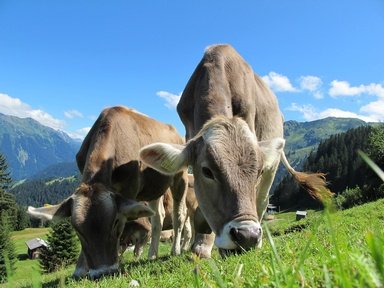
The Great European Cow Quest Trivia Quiz
Cows have been man's companions since time immemorial, and different breeds have developed in different countries. Can you identify the countries of origin of ten breeds?
A label quiz
by wellenbrecher.
Estimated time: 3 mins.
